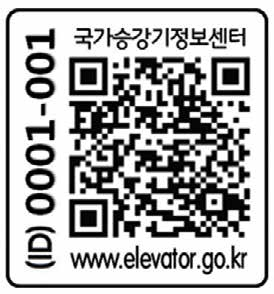EM – National comprehensive elevator information system, authorized and operated by the Korea Elevator Safety Agency (KoELSA) from the National Elevator Information Center and the Ministry of Public Safety and Security. The system has been officially operated since 2013, helping to make information transparent in management and rescue work, promoting Korea to become a leading country in elevator safety.
The important achievements of the system are improved elevator quality, reducing the time required to perform rescue operations in the event of an accident. The system also prevents the concealment of elevator accidents and allows authorized personnel to quickly check relevant information by accessing the system’s historical data.
Moreover, due to coincident with the Korean government’s “Production Industry Reform 3.0” strategy, the system protects citizens’ right to know, leading to efficient administrative work handling, minimizing elevator accidents and enhance elevator management.
The system also assigns a QR code (Quick response code) to each elevator, like a license plate, allowing users to verify the elevator history anytime, anywhere by entering location information into the database. The system also proactively prevents minor to fatal accidents and provides after-sales management. This clearly shows the importance of the system.
In the past, passengers had no way to safely check the elevators they use every day, but the Comprehensive Elevator Information System provides inspection data and history for each elevator, allowing anyone can judge for themselves the quality of the elevator they own. This also allows the companies involved to improve the quality of their elevators thereby improving the quality and safety of their elevators.
This system provides elevator specifications such as elevator inspection status pass/fail, inspection time is public. By using QR codes, the system allows users to know the location of each elevator inside the building or underground, where the GPS system is not working.


Elevator QR code – Source: KoELSA
In the past, elevator accident rescue was interrupted because the exact location of the elevator to be repaired was not registered. Also, there has been a loss of property due to the elevator being forced to open during the rescue. Currently, if the rescuer informs the rescue team of the elevator number, the rescue team can immediately read the elevator’s specification such as the specific location of the elevator and the emergency password. Therefore, the rescue becomes more convenient, the response time is shortened and the damage is minimized.
Frequent breakdowns are a sign of an impending serious elevator accident. Previously, it was difficult to verify the failure history of the elevator if the management agency concealed the failure of the elevator and did not report it. However, now we can check the elevator history at any time. Therefore, elevator risk information, including accidents and failures, cannot be concealed. It was transparent.
Prior to the establishment of the system, some confusion occurred such as the duplicate inspection of the elevators. But now, each elevator has been registered with a unique ID number on the database system to prevent duplicate inspection. As a result, efficiency is improved, and associated costs have been reduced.
In the past, the regulator used to fill out the accreditation sheet once a month. If there is an error, it is also difficult to verify because the data is not updated regularly. The test results are now entered into the data system. This allows users to use this data as a safety management resource for each building and each elevator.
Besides, the Comprehensive Elevator Information System has also significantly improved Korean people’s awareness of elevator safety. In addition, companies have increased their efforts to improve the quality of their elevators, leading to a significant improvement in the elevator safety culture.
The system helped establish a “self-regulating environment,” allowing residents to determine if an elevator is a licensed elevator (i.e. with its own elevator number plate) or an unregistered elevator so they can report to the authority. Thus, when the number of civil complaints related to elevator risks was handled quickly and promptly, for example, an increase from 271 cases in 2014 to 470 cases in 2015 made the agency improve elevator quality.
In Korea, after the registration of inspection results in the database of maintenance companies became mandatory, KoELSA announced that it will set up a quick operation system so that companies can import data and complete the report by mobile device on the site. In addition, KoELSA also affirmed its determination to constantly improve the operation of the system and make more efforts to ensure the safety of people./.



